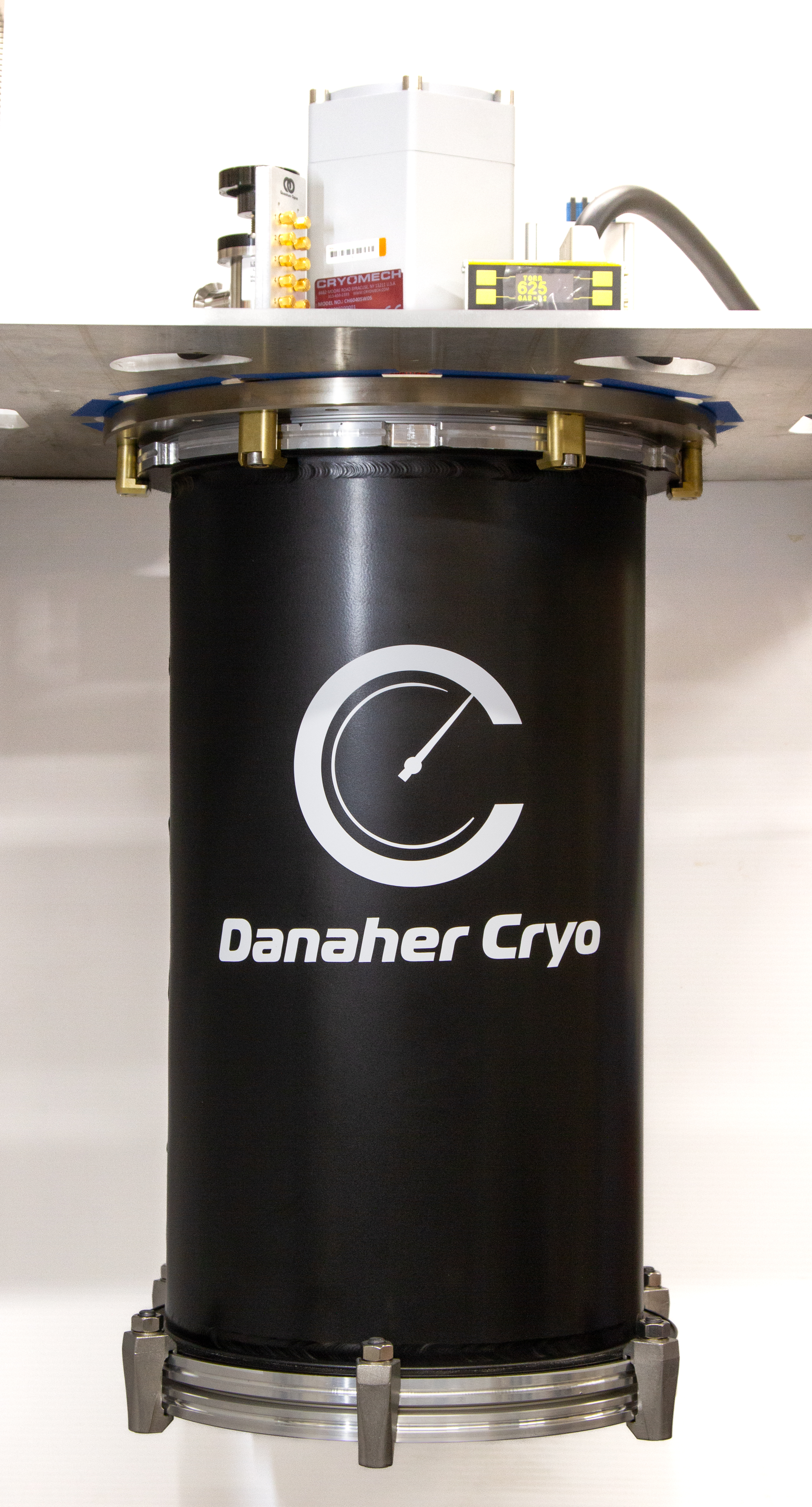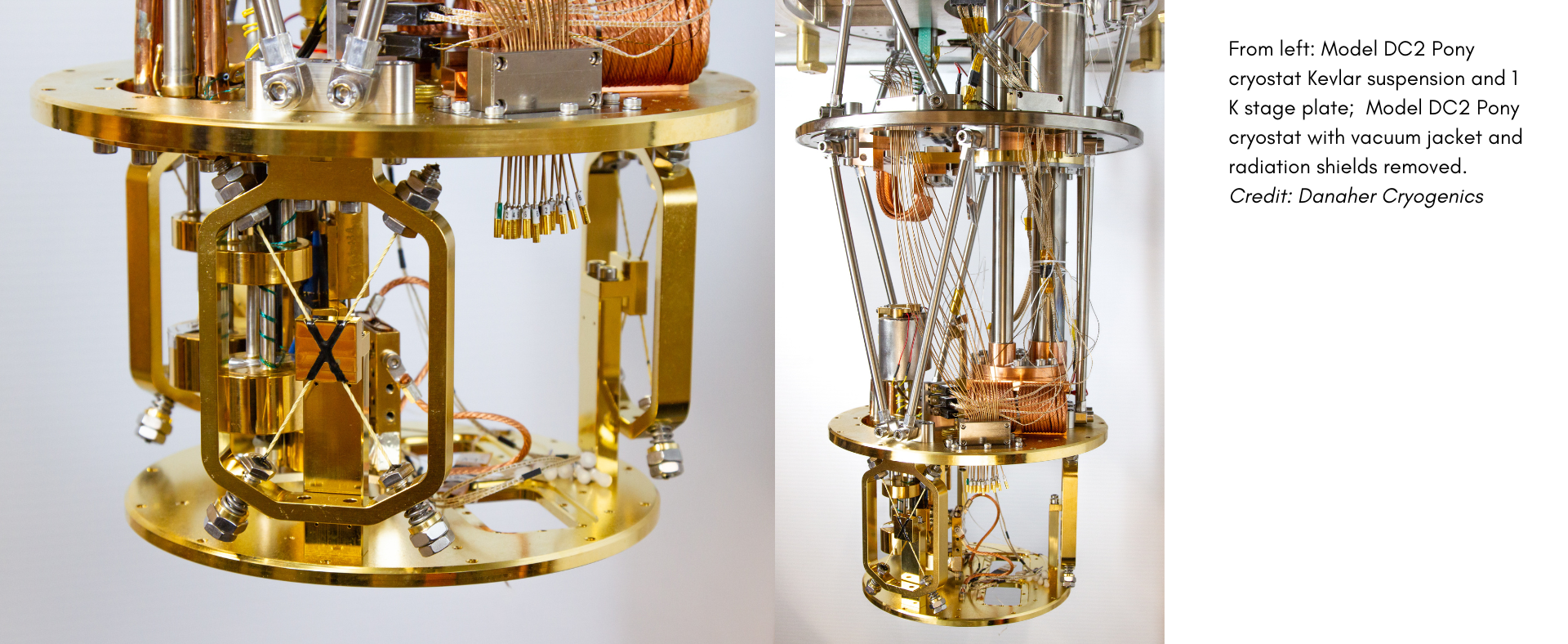 Scientists should spend their efforts on research, not on infrastructure! Scientists often need a reliable source of sub-kelvin cooling. Historically, because no reliable provider of such systems existed, many scientists were resigned to build their own. No longer. Identifying this unmet need in the science community, Danaher Cryo stepped up to offer several elegant solutions. Teaming with Chase Research Cryogenics (CSA CSM), Danaher has established a line of sub-kelvin cryostats that provide long-awaited, convenient solutions. One such system is the Model DC2 Pony cryostat that Danaher recently delivered to Argonne National Laboratory (ANL) (CSA CSM). The Pony incorporates Chase’s CC4 cooler, which provides continuous sub-kelvin temperatures.
Scientists should spend their efforts on research, not on infrastructure! Scientists often need a reliable source of sub-kelvin cooling. Historically, because no reliable provider of such systems existed, many scientists were resigned to build their own. No longer. Identifying this unmet need in the science community, Danaher Cryo stepped up to offer several elegant solutions. Teaming with Chase Research Cryogenics (CSA CSM), Danaher has established a line of sub-kelvin cryostats that provide long-awaited, convenient solutions. One such system is the Model DC2 Pony cryostat that Danaher recently delivered to Argonne National Laboratory (ANL) (CSA CSM). The Pony incorporates Chase’s CC4 cooler, which provides continuous sub-kelvin temperatures.
The Pony cryostat hosts a Cryomech PT405 Pulse Tube cryocooler, generating intermediate cooling stages at 50 K and 3 K. The Chase CC4 sorption cooler is a self-contained module that, unlike a dilution refrigerator, requires no gas handling system. Rather, operating the Chase cooler simply requires a handful of electrical connections for operating a series of heaters.
For comparison, dilution refrigerator systems typically consume at least twice as much lab space due to the required plumbing, including vacuum pumps, valves and all the associated complexity, electricity draw, etc. Lastly, the Pony cryostat, as with all Chase-outfitted systems, is immune from helium-3 mixture loss due to vacuum pump failure.
System Construction
The Pony’s vacuum jacket is constructed from lightweight aluminum and is conveniently sized to ISO conventions. In order to offer the user maximum flexibility, many standard ports are included in the 300 K top plate. And the 50 K and 3 K stage plates include many customizable ports for wiring, etc. To thermally protect the cold space, nickel-plated aluminum radiation shields are employed. Stage plates are suspended by slender but rigid SST struts. To maximize thermal conduction, all components at or below 4 K are made of gold-plated copper. In order to minimize mechanical vibrations, special copper braid assemblies are employed to attach the pulse tube to the corresponding thermal stages. In the experimental space, a large (20-mm-diameter) cold plate is provided for users to install their devices. Further, provisions are included for adding a 1 K radiation shield.
HorsePower Software and Control System
Danaher’s HorsePower software controls the cryostat, including automating the cooldown, warmup, data acquisition and user interface. Using the HorsePower control system, via a touch screen, the user can command a pumpdown and cooling cycle with a single push of a button. All the while, they can monitor and control the system through a network interface. For a rapid system warmup, the user simply selects the warm-up option, and current is delivered to high power heaters on the cryostat stage plates. To provide ample experimental space and provisions, the Pony offers a Kevlar suspension.
By implementing Kevlar, the Chase cooler is protected from any of the typical stresses associated with attaching experimental masses directly to the cooler. Additionally, the Kevlar suspension allows for large masses to be suspended and cooled, masses larger than would ever be considered to be attached directly to the Chase cooler.
HorsePower software allows the user to regulate the temperature of the sample plate anywhere between ~0.9 K and 4 K. Without any elaborate control methodology, a stability of ~+/- 25 µK is readily achievable.
Tool-Less, No-fastener Vacuum Jacket Attachment
The opening and closing of a cryostat is always more burdensome than it needs to be. The proprietary design of the Pony brings a welcomed convenience. No tools are required, nor are any fasteners removed (and possibly lost!). Rather, the vacuum jacket has a bayonet (patent pending) feature on the interface between the vacuum jacket and the cryostat chassis. The result is that a single operator can quickly and easily open or close the cryostat. The vacuum jacket is simply lifted and rotated into place, and then cam-levers are actuated to create the vacuum seal.
Argonne National Laboratory Planned Use of Device
The primary purpose of the Danaher cryostat at ANL will be to test and characterize superconducting nanowire particle detectors, mostly focusing on nuclear physics applications. More specifically, due to the cryostat’s large experimental space, the system will be used to test full wafers (prior to dicing) and gather statistics on the array of chips present. Subsequently, the wafer will be diced, and the selected chips will be used for experiments on a beamline.
Moving the Science Forward
Scientists seek to develop a charged particle detector. During experiments at accelerators, one of the byproducts of the particle collisions is a whole segment of particles not typically detected. However, there is much to learn from these generated, charged particles. Such as the origin of a proton’s mass and distribution function. Many such mysteries can be solved by the ability to place a cryogenic particle detector deep inside an accelerator. The Pony cryostat may well be instrumental in this quest.
Additional Offerings by Danaher Cryogenics
The Pony cryostat is just one member of an extensive family of cryostats offered by Danaher Cryogenics. Other Chase coolers and their associated cooling performances include GL4, One-shot 1 K;
GL7, One-shot 300 K; CC7, Continuous 300 mK; GL10, One-shot 225 mK; and CMD, Continuous 85 mK. Additionally, these family members fall into three chassis sizes: Mini, Standard and Major. This allows the user to select the system that offers the proper amount of experimental space, somewhat independent of the desired base temperature.
System Integration, Custom Solutions, and Developments
Danaher Cryo is equipped to outfit any cryostat with added features, including instrumentation wiring, fiber optics, experimental field magnets, etc. Additionally, Danaher Cryogenics is partnering with the University of Colorado and NIST laboratories in Boulder, Colo. to commercialize the Adaptive Cooling Technology (ACT) Pulse Tube invention. This product offers promise in the quest for more rapid and efficient cryogenic research. By speeding up system cooldown speed, and doing it without expending more energy, ACT will facilitate quantum research and development.
In support of the commercialization of the ACT invention, Danaher Cryogenics was recently awarded a $50,000 Translational Seed Grant from Colorado’s Office of Economic Development and International Trade. This grant will help accelerate the progress on this exciting technology. Lastly, Danaher Cryogenics was selected to participate in the Innosphere Ventures incubator program for 2024. This program offers mentoring for startups in the high-tech field. www.danahercryo.com.
Lead Image: Model DC2 Pony cryostat delivered to Argonne National Laboratory. Credit: Danaher Cryogenics




